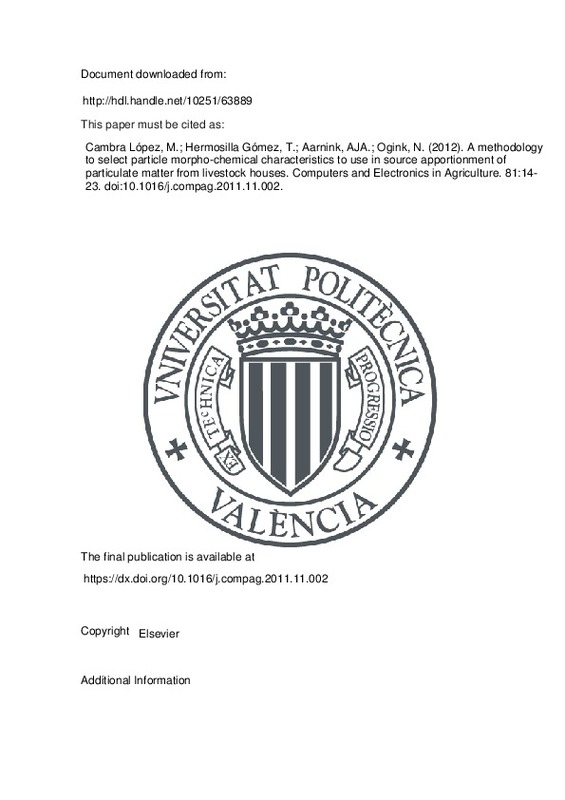JavaScript is disabled for your browser. Some features of this site may not work without it.
Buscar en RiuNet
Listar
Mi cuenta
Estadísticas
Ayuda RiuNet
Admin. UPV
A methodology to select particle morpho-chemical characteristics to use in source apportionment of particulate matter from livestock houses
Mostrar el registro completo del ítem
Cambra López, M.; Hermosilla Gómez, T.; Aarnink, AJA.; Ogink, N. (2012). A methodology to select particle morpho-chemical characteristics to use in source apportionment of particulate matter from livestock houses. Computers and Electronics in Agriculture. 81:14-23. doi:10.1016/j.compag.2011.11.002
Por favor, use este identificador para citar o enlazar este ítem: http://hdl.handle.net/10251/63889
Ficheros en el ítem
Metadatos del ítem
| Título: | A methodology to select particle morpho-chemical characteristics to use in source apportionment of particulate matter from livestock houses | |
| Autor: | Hermosilla Gómez, Txomin Aarnink, André Johannes Antonius Ogink, Nico | |
| Entidad UPV: |
|
|
| Fecha difusión: |
|
|
| Resumen: |
[EN] Intensive poultry and pig houses are major point sources of particulate matter (PM) emissions. The
knowledge on the contribution of individual sources to PM in different fractions is essential to improve
PM reduction ...[+]
|
|
| Palabras clave: |
|
|
| Derechos de uso: | Reserva de todos los derechos | |
| Fuente: |
|
|
| DOI: |
|
|
| Editorial: |
|
|
| Versión del editor: | https://dx.doi.org/10.1016/j.compag.2011.11.002 | |
| Agradecimientos: |
We acknowledge the support of the Dutch Ministry of Agriculture, Nature and Food Quality that financed this study. We thank the Servicio de Microscopia Electronica (Universidad Politecnica de Valencia) for expert technical ...[+]
|
|
| Tipo: |
|







![[Cerrado]](/themes/UPV/images/candado.png)


